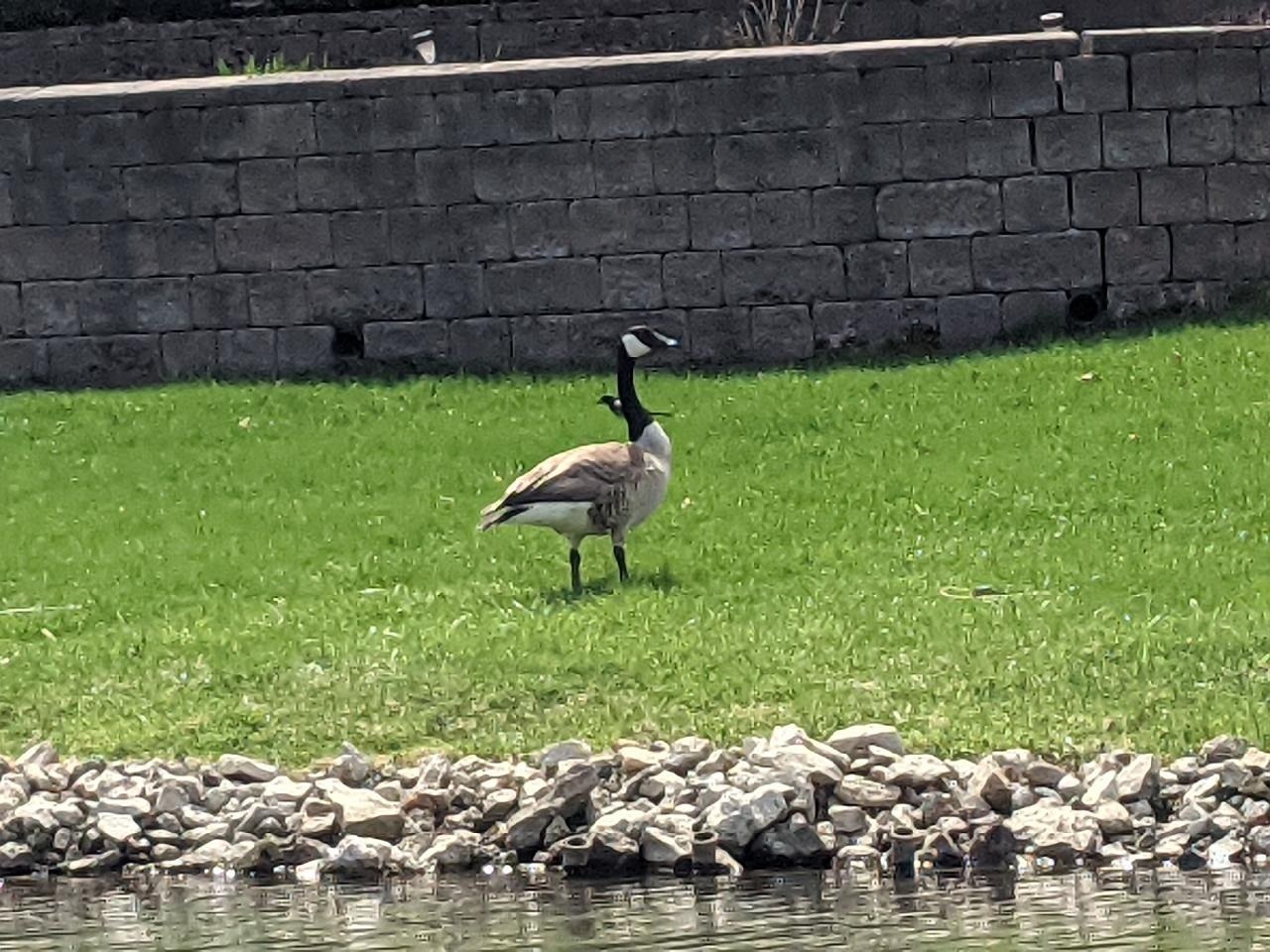In addition to being a nuisance, geese reduce our water quality by introducing contaminants. The more goose poop in our lake, the more likely it is that our beach will have to be shut down occasionally due to bacteria levels. Help keep Loch Lomond healthy with these geese management tips from Benjamin Williams at the Illinois Department of Natural Resources (IDNR).
Harassment
Consistent harassment is one of the best ways to prevent geese from using a designated area. Geese are generally lazy and don’t want to expend a bunch of energy moving around all of the time. If they are at your site, it’s because they feel safe there. Keeping them on their toes and wary about the surroundings is a good way to try to convince them that they can find a safer refuge. As long as you don’t actually touch/harm the birds, you don’t need any sort of permit to harass the geese.
Effective forms of harassment include shouting, herding, chasing, running dogs, coyote decoys, remote control cars/boats, lasers, etc. There are a lot of different things you can do, but the keys are to be consistent and to vary your harassment. It’s not always feasible, but harassing geese whenever they get into an area you don’t want them to be will begin to teach them that this is not a good spot. Varying the harassment is essential as well. For example, some people have found luck with coyote/predator decoys, but what makes the decoys even more effective is backing them up with actual dogs. That way the geese have to be guessing: Is that a decoy or the real thing? Once geese become complacent in your harassment it won’t be as effective, so switching it up keeps things fresh. Again, you can’t actually hit or harm the geese.
You also can’t harass geese if they are sitting on a nest or are with young goslings, so be sure to start as soon as you see geese in the spring.
Habitat modification
Another thing you can try is some sort of habitat modification. Changing some of the landscaping or physical habitat that the geese are interacting with can make the site less desirable for them. Some examples of habitat modification include:
- Placing large rocks or shrubs near lake shores such that the geese can’t get through them
- Fencing off a sensitive area that you don’t want the geese to get to
- Allowing grass to grow taller near a lake shore making it less inviting for the geese to cross
- Installing an overhead wire grid to prevent geese from swimming or flying into water features, etc.
Again, not all of these may be practical to your situation, but they might be something to consider. Additionally, there are chemical applications that act as repellents for the geese. One of the more common ones is applied to the grass and gives off a UV coloration that the geese can see (but humans can’t). When the geese eat that grass, it gives them intestinal discomfort and they associate that discomfort with the UV coloration, avoiding it in the future. The problem is, every time you cut the grass you have to reapply the chemical. Chemical repellents usually work best when they are applied in small areas, not large acreages. Combining some form of habitat modification with the consistent harassment will only help mitigate problems.
(Note from a Loch Lomond resident: One of the LLPOA directors heard an old wives’ tale about applying grape Koolaid to prevent geese. It appeared to work on the small beach on their shoreline!)
Nest/egg destruction permitting
Another management tool that is available is the Canada goose nest/egg destruction permit from the IDNR. This is a free permit that would allow you to destroy goose nests and eggs on your property to prevent population growth. It won’t actively decrease your population, but it can help prevent the problem from getting worse. There is an application for this permit that would need to be filled out and sent to the IDNR. Be very thorough in the application, as it’s legal justification for issuing you the permit. Even if you don’t think you have a nesting problem, it might be a good idea to search for nests/eggs regardless. The permit is free to apply for and can usually be turned around pretty quickly. It also comes with instructions for people who aren’t sure how best to destroy the nests/eggs.
There really is no “silver bullet” to getting rid of all geese, nor is it realistic to think we will ever get rid of ALL our geese. As long as there is good habitat (water, access to food, grass, etc.), there will likely be some geese. The goal is to get it down to a level we can live with! Without a “silver bullet,” we have to be consistent and vary our management tactics. A combination of harassment, habitat management, and nest/egg work is the best way to mitigate the problem. Thank you for doing your part, and thank you to Benjamin Williams for sharing these tips with us.
Check out the IDNR goose page for more information about geese.

